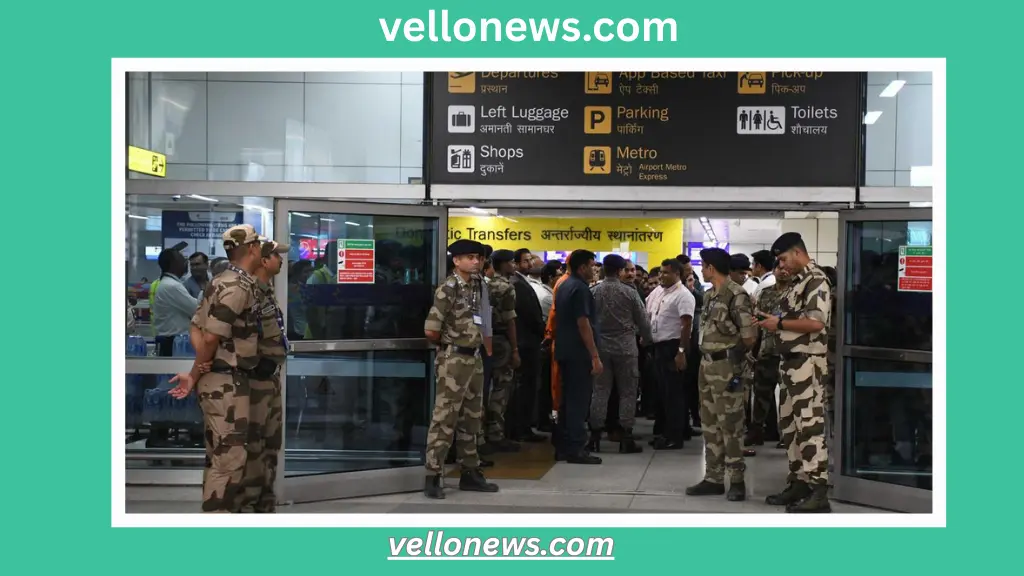S 400 Defence System- In an era when drone warfare, missile threats, and cross-border tensions have become the norm—especially between India and Pakistan—modern air defence isn’t just an option, it’s a necessity. India’s acquisition of the S-400 defence system has tilted the balance in its favour.
This article explores what the S-400 system is, how it works, and what it means for national security, with special attention to hotspots like Jammu Airport, Pathankot, and Jaisalmer.
Overview: S-400 Missile Defence System
| Full Name | S-400 Triumf (NATO: SA-21 Growler) |
| Developer | Almaz-Antey (Russia) |
| Range | Up to 400 km |
| Target Types | Aircraft, UAVs, Cruise & Ballistic Missiles |
| India’s Deal Value | Approx. $5.43 Billion (₹39,000 Crore) |
| Deployment Areas | Punjab, Rajasthan (Jaisalmer), Jammu, etc. |
| Key Role | Long-range Air Defence |
| Nickname in India | Sudarshan Chakra of Indian Skies |
What is the S-400 Defence System?
The S-400 defence system is one of the most advanced air defence platforms in the world. It can simultaneously detect, track, and neutralize threats from multiple directions—including drones, fighter jets, and even ballistic missiles.
With its powerful radar and four types of interceptor missiles, it offers a layered shield that protects Indian skies from potential attacks like the Pathankot airbase incident, Jammu Airport drone attacks, and even cross-border threats from Lahore or Islamabad.

Why S-400 is Called India’s “Sudarshan Chakra”
Much like the mythological weapon used by Lord Vishnu to destroy evil, the S-400 air defence system is being called India’s “Sudarshan Chakra.”
It’s not just a defensive tool—it’s a strategic deterrent. Positioned at crucial zones like Jaisalmer, Pathankot, and near Jammu, it creates an invisible dome that can intercept any airborne object coming from Pakistan—even a swarm drone or a Harop loitering munition.
S-400 vs Other Defence Systems in South Asia
India’s air defence arsenal includes systems like Akash, Barak-8, and Iron Dome-inspired models, but the S-400 outclasses them all. Compared to Pakistan’s HQ-9 system, the S-400 has longer range, more advanced radar, and a faster reaction time. It’s also supported by AWACS aircraft, Harpy drones, and real-time surveillance, which were crucial during recent skirmishes and Jammu attacks.
Real Threats It Can Tackle
Recent headlines like “Drone attack in Jammu Airport,” “Lahore News: Air Defence on Alert,” or “India Attacks Lahore in Response to Drone Strike” show how real the threat is.
The S-400 system can detect drones from over 600 km away and shoot them down before they cross the border. It’s the need of the hour, especially with rising India-Pakistan war breaking news, Islamabad attacks, and swarm drone raids.
Deployment Points of S-400 in India
- Punjab Sector: Covers Pathankot, Amritsar, and Jalandhar.
- Rajasthan Sector: Protects Jaisalmer, Pokhran, and Bhuj.
- Jammu & Kashmir Sector: Monitors Jammu Airport, RS Pura, and Udhampur.
- Central Command: For intercepting long-range threats aimed at Indian metros.
The Role of S-400 in Current India-Pakistan Tensions
With constant updates about war between India and Pakistan, and attacks on cities like Lahore and Jammu, the deployment of the S-400 missile system in India brings hope.
It ensures that not just our soldiers, but also civilians are protected. In case of full-blown war, S-400 can intercept enemy fighter jets and missiles before they even reach Indian airspace.
Also Read:
- Evan Johnson Arrested – Dark Secrets Finally Come to Light
- Tyre Nichols Trial: What Happened and What Comes Next?
- Dr. Casey Means: A New Face in the Race for Surgeon General
Is S-400 the Final Answer to India’s Defence Needs?
While the S-400 missile system is a game-changer, no single system can defend an entire nation. It must work in sync with indigenous systems like Akash, Swarm Interceptors, and Radar Grids placed across the border. Integrating the S-400 with satellite surveillance, AWACS systems, and cyber command units will create a near-impenetrable air shield.
Conclusion:
India’s decision to deploy the S-400 air defence system is not just a technological upgrade—it’s a strategic move. In a region fraught with rising tensions, drone attacks, and constant threats from across the border, the S-400 is the sword and shield we’ve long needed. Whether it’s protecting cities like Jammu, Jaisalmer, or Pathankot, or standing guard during India-Pakistan war live updates, this system is a silent sentinel—ready and watching.
FAQs About the S-400 Defence System
1. What is the S-400 air defence system and who developed it?
The S-400 is a long-range air defence system developed by Russia’s Almaz-Antey. It can destroy aircraft, drones, and missiles up to 400 km away.
2. How many S-400 systems has India acquired?
India has signed a deal for five S-400 regiments from Russia, with most already delivered and deployed near border hotspots.
3. Where is the S-400 deployed in India?
It’s stationed in critical regions like Jaisalmer, Pathankot, Jammu, and near other border-sensitive zones.
4. Can the S-400 intercept drones and missiles during war?
Yes, the S-400 can simultaneously track and destroy 80 targets, including drones, cruise missiles, and fighter jets.
5. Is the S-400 better than Pakistan’s air defence system?
Yes, it outperforms Pakistan’s HQ-9 in range, radar capabilities, and missile variety, making it one of the best systems in South Asia.